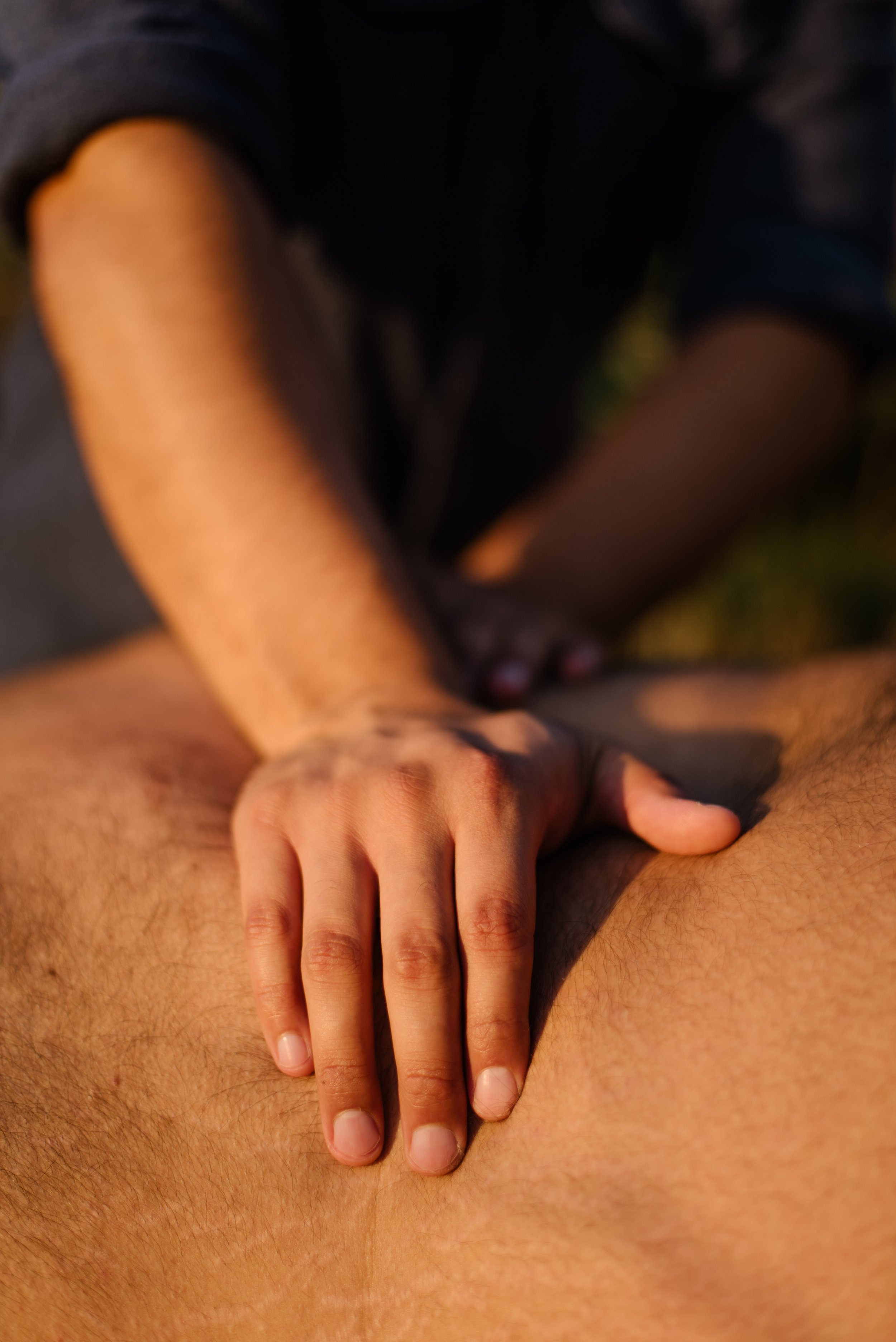What kind of pressure do you like?
If there is one theme that will show up again and again on this blog, it is the following:
A massage is only as good as the level of communication between the client and the therapist.
How many times have you been asked how the pressure is, and responded, “fine,” or been asked if you want “light, medium, or heavy” pressure? This is super common, and the lack of clarity is not your fault. What do these words mean? What might be experienced as light pressure by you may be perceived as heavy pressure by your therapist, or vice versa. If you tell them the pressure is fine your therapist might ask you to elaborate. It’s our job to help you reach your wellness goals, and we want to do that for you! That’s why we check in. At IMEB we believe it’s also part of our job to establish a common language between clients and therapists so we can communicate effectively. When it comes to pressure, here’s what we say:
Client is on the table, session has begun.
“During the session we’ll use a pressure scale of 1-10. One (1) is something like, ‘Have you started yet? / What are you even doing up there?’ — maybe something like this:
Therapist demonstrates what a 1 might be- very light touch, the weight of one hand.
A 10 will make you think, ‘I’m going to get off this table and punch you’’ [humor is good for relieving anxiety]. I’m not going to demonstrate that.
My target range is 4-7. Four (4) is when it starts to feel good, therapeutic kinda hurt, you know what I mean? Seven (7) is intense, but you can breathe through it without too much trouble. Eight (8) is the moment when it’s so intense that you need to clench something, such as your jaw, fist, or the other side of your body, in order to stay relaxed where I am working. For our purposes, that’s too much pressure.
With that scale in mind, where is this pressure on that scale of 1-10?
Using the heels of both palms, the therapist sinks into the client’s mid back/erector area to what they think might be a 4.
Client responds.
Great, thanks. I’ll use that as my reference point throughout the session. Some areas might be more sensitive than others. Please feel free to use this scale to request more pressure or to let me know when it’s getting intense, especially as we enter the 6-7 range.”
And that’s the pressure scale.
When describing personal experiences, subjectivity is impossible to avoid. However, when it comes to therapeutic care, clear, accessible, and compassionate communication is critical. Just saying we’re using a numeric scale (1-10, 4-7) isn’t enough without defining what those numbers mean, which is why we came up with the above framing.
As massage therapists we do our best to provide the best experience possible for every client. Our mission is to work with you to meet your wellness goals and direct communication helps us do that. If you have some constructive feedback for your therapist after your session please feel free to share it with them! That stuff can be hard to hear sometimes, but ultimately it helps everyone to improve. Of course, we also love to hear you sing our praises, so don’t be shy about that either. Everyone loves positive affirmations. Sometimes you and your therapist just don’t vibe! That happens, and it’s ok. Maybe one of our other therapists is a better match so please feel free to ask us to schedule your next session with someone else. You can simply say you’d like to experience what everyone at IMEB has to offer!
That’s it for this post. Please leave questions, constructive criticism, and whatever is in your heart in the comments!
If you have a bad experience, on any level, we really want to hear about it and make things right. Please reach out to management at cesar@inclusivemassage.space.

